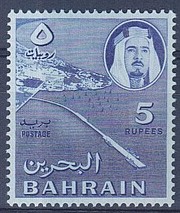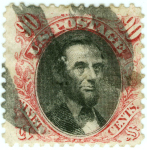
Discussion - Member to Member Sales - Research Center

Discussion - Member to Member Sales - Research Center

However, it does have to do with stamps.....
ABKLATSCH
"Abklatsch" is the name for a mirrored print or imprint of the stamp image (or a part of it) on the back of the stamp.
The creation thus takes place as an imprint of the original stamp image on the back (gom side) of the stamp.
The "Abklatsch" can occur in two ways:
1) The set-off occurs when the printing press is idling.
As a result, the stamp image is not printed on the paper but on the printing body, e.g. the counter roller.
If paper is then inserted again, a mirror image of the stamp is created on the back.
2) If freshly printed sheets are placed on top of each other, a set-off can also occur.
However, this is usually not as clear as in the first case.
A few examples from "Abklatsch" on German Stamps :

3 Members
like this post.
Login to Like.
German Empire :

DR 182

DR 246

DR 279a

DR 279a certificate

3 Members
like this post.
Login to Like.

DR 292

DR 296

DR309B

DR309B certificate

DR312B HAN nr

DR312 HAN nr certificate

2 Members
like this post.
Login to Like.

DR 325B

DR 329

DR 334B

DR 339 Pa UR

DR 339 Pa UR certificate

2 Members
like this post.
Login to Like.

DR D159

DR FELDPOST 1

LOKAL AUSGABEN Strausberg 361

2 Members
like this post.
Login to Like.
Amerikanische und Britische Besetzung

Michelnr 80
Gemeinschaftsausgabe

Michelnr 917

Michelnr 922

Michelnr 923

2 Members
like this post.
Login to Like.

09:53:10am
"The next topic has nothing really to do with Germany except that it's a German expression that I can't translate.
However, it does have to do with stamps.....
ABKLATSCH
"Abklatsch" is the name for a mirrored print or imprint of the stamp image (or a part of it) on the back of the stamp."
The English philatelic translation would be "offset".
From "The Stamp Collector's Encyclopaedia" by R.J. Sutton

"Set-off" may be a more British term. I have never heard it used here in North America.
Roy

2 Members
like this post.
Login to Like.
BERLIN

Michelnr 25

Michelnr 179

Michelnr 219

2 Members
like this post.
Login to Like.
Bundes Republik Deutschland

BRD 78

BRD 164

BRD 296

BRD 311

BRD 831

BRD Block 3

1 Member
likes this post.
Login to Like.
DANZIG

Michel nr 54

Michel nr 54
YEP same stamp, different "Abklatsch"

Michelnr 141

Michelnr D 38

4 Members
like this post.
Login to Like.
Well, hopefully you found this interesting........
Greetings
HockeyNut a.k.a. Henry

8 Members
like this post.
Login to Like.
"Set-off" is more commonly seen in Europe, though I've seen the term used in "older" American publications. I have seen the term "Abklatsch" but never really thought about it -- simply knew it to mean something along the lines of "copy."
"Klatsch" itself translates into "gossip," which, if we think about it, means "retelling," thus a copy of a story is being passed on, as in a "Coffee Klat(s)ch" or "Kaffeeklatsch."
"Ab" in this case translates into "of" or "from."
"Briefmarke Ablatsch" loosely translates into "copy of stamp" or "poor copy of stamp."

Login to Like
this post

12:33:26pm
Very interesting post!! It certainly explains how what I have been calling "full offset copies" of stamps came into existence. I have a couple I've got from SOR people and actually did a short post a week or so ago to see if anyone could explain how they came about, now I know! Thanks!!

Login to Like
this post
Thanks for these beautiful posts.
Allied Occupation, Germany 1948 (British American Zone) Michel 47 II.

In the Michel catalog, many varieties of overprint are mentioned under the heading "Abarten" (double.vertical, diagonal, etc.), but not "Abklatsch" - the same situation for all the other stamps posted in this thread.
Why are they not mentioned? (I also saw the experts' certificates confirming this variety)

1 Member
likes this post.
Login to Like.
Dear Gerom,
In the Michel catalogus under chapter "Double prints" page 8 :
The so-called double or multiple image printing occurs only in offset.
This looks similar to the real double print, but has a completely different cause.
The apparently existing second print is created when the rubber blankets stretch, form a bead when not tightened and transfer a ghost image.
This is a particularly pronounced so-called Schmitz pressure.
Until 1992, only those with a mostly distinct second contour were signed as double-image prints.
Since double-image prints are print coincidences, they are no longer listed in the Michel Germany catalogue.

2 Members
like this post.
Login to Like.
Hi HockeyNut,
Thank you for the explanation of the occurrence of double printing - this appears on the front of the stamp (there are many explanations from the Michel catalog that I did not manage to translate)
My Michel 47 stamp shows the so-called set-off (Abklatsch).
Many variations of the overprint are mentioned in the catalog:

I wonder why Abklatsch (set off) does not appear in the list; it is a mistake as strange as the diagonal overprint, upside down, one normal and one diagonal, etc.
And even for the stamps you posted, this variety is not mentioned in the catalog

Login to Like
this post

The next topic has nothing really to do with Germany except that it's a German expression that I can't translate.
However, it does have to do with stamps.....
ABKLATSCH
"Abklatsch" is the name for a mirrored print or imprint of the stamp image (or a part of it) on the back of the stamp.
The creation thus takes place as an imprint of the original stamp image on the back (gom side) of the stamp.
The "Abklatsch" can occur in two ways:
1) The set-off occurs when the printing press is idling.
As a result, the stamp image is not printed on the paper but on the printing body, e.g. the counter roller.
If paper is then inserted again, a mirror image of the stamp is created on the back.
2) If freshly printed sheets are placed on top of each other, a set-off can also occur.
However, this is usually not as clear as in the first case.
A few examples from "Abklatsch" on German Stamps :

3 Members
like this post.
Login to Like.

re: The expression "Abklatsch"
German Empire :

DR 182

DR 246

DR 279a

DR 279a certificate

3 Members
like this post.
Login to Like.

re: The expression "Abklatsch"

DR 292

DR 296

DR309B

DR309B certificate

DR312B HAN nr

DR312 HAN nr certificate

2 Members
like this post.
Login to Like.

re: The expression "Abklatsch"

DR 325B

DR 329

DR 334B

DR 339 Pa UR

DR 339 Pa UR certificate

2 Members
like this post.
Login to Like.

re: The expression "Abklatsch"

DR D159

DR FELDPOST 1

LOKAL AUSGABEN Strausberg 361

2 Members
like this post.
Login to Like.

re: The expression "Abklatsch"
Amerikanische und Britische Besetzung

Michelnr 80
Gemeinschaftsausgabe

Michelnr 917

Michelnr 922

Michelnr 923

2 Members
like this post.
Login to Like.
BuckaCover.com - 80,000 covers priced 60c to $1.50 - Easy browsing 500 categories
15 Jan 2023
09:53:10am
re: The expression "Abklatsch"
"The next topic has nothing really to do with Germany except that it's a German expression that I can't translate.
However, it does have to do with stamps.....
ABKLATSCH
"Abklatsch" is the name for a mirrored print or imprint of the stamp image (or a part of it) on the back of the stamp."
The English philatelic translation would be "offset".
From "The Stamp Collector's Encyclopaedia" by R.J. Sutton

"Set-off" may be a more British term. I have never heard it used here in North America.
Roy

2 Members
like this post.
Login to Like.

re: The expression "Abklatsch"
BERLIN

Michelnr 25

Michelnr 179

Michelnr 219

2 Members
like this post.
Login to Like.

re: The expression "Abklatsch"
Bundes Republik Deutschland

BRD 78

BRD 164

BRD 296

BRD 311

BRD 831

BRD Block 3

1 Member
likes this post.
Login to Like.

re: The expression "Abklatsch"
DANZIG

Michel nr 54

Michel nr 54
YEP same stamp, different "Abklatsch"

Michelnr 141

Michelnr D 38

4 Members
like this post.
Login to Like.

re: The expression "Abklatsch"
Well, hopefully you found this interesting........
Greetings
HockeyNut a.k.a. Henry

8 Members
like this post.
Login to Like.

re: The expression "Abklatsch"
"Set-off" is more commonly seen in Europe, though I've seen the term used in "older" American publications. I have seen the term "Abklatsch" but never really thought about it -- simply knew it to mean something along the lines of "copy."
"Klatsch" itself translates into "gossip," which, if we think about it, means "retelling," thus a copy of a story is being passed on, as in a "Coffee Klat(s)ch" or "Kaffeeklatsch."
"Ab" in this case translates into "of" or "from."
"Briefmarke Ablatsch" loosely translates into "copy of stamp" or "poor copy of stamp."

Login to Like
this post
Back when I had a bunch! I think, therefore I am - I think! Descartes, sort of!
15 Jan 2023
12:33:26pm
re: The expression "Abklatsch"
Very interesting post!! It certainly explains how what I have been calling "full offset copies" of stamps came into existence. I have a couple I've got from SOR people and actually did a short post a week or so ago to see if anyone could explain how they came about, now I know! Thanks!!

Login to Like
this post
04:48:46am
re: The expression "Abklatsch"
Thanks for these beautiful posts.
Allied Occupation, Germany 1948 (British American Zone) Michel 47 II.

In the Michel catalog, many varieties of overprint are mentioned under the heading "Abarten" (double.vertical, diagonal, etc.), but not "Abklatsch" - the same situation for all the other stamps posted in this thread.
Why are they not mentioned? (I also saw the experts' certificates confirming this variety)

1 Member
likes this post.
Login to Like.

re: The expression "Abklatsch"
Dear Gerom,
In the Michel catalogus under chapter "Double prints" page 8 :
The so-called double or multiple image printing occurs only in offset.
This looks similar to the real double print, but has a completely different cause.
The apparently existing second print is created when the rubber blankets stretch, form a bead when not tightened and transfer a ghost image.
This is a particularly pronounced so-called Schmitz pressure.
Until 1992, only those with a mostly distinct second contour were signed as double-image prints.
Since double-image prints are print coincidences, they are no longer listed in the Michel Germany catalogue.

2 Members
like this post.
Login to Like.
12:41:56pm
re: The expression "Abklatsch"
Hi HockeyNut,
Thank you for the explanation of the occurrence of double printing - this appears on the front of the stamp (there are many explanations from the Michel catalog that I did not manage to translate)
My Michel 47 stamp shows the so-called set-off (Abklatsch).
Many variations of the overprint are mentioned in the catalog:

I wonder why Abklatsch (set off) does not appear in the list; it is a mistake as strange as the diagonal overprint, upside down, one normal and one diagonal, etc.
And even for the stamps you posted, this variety is not mentioned in the catalog

Login to Like
this post

